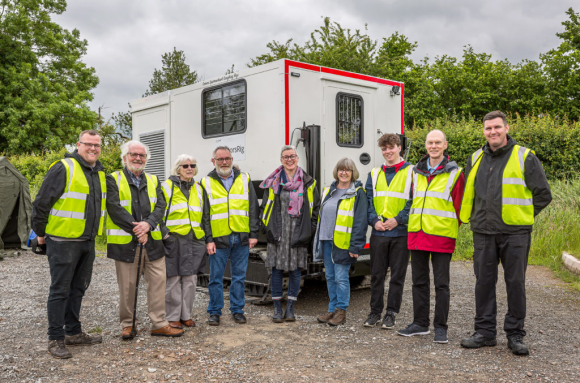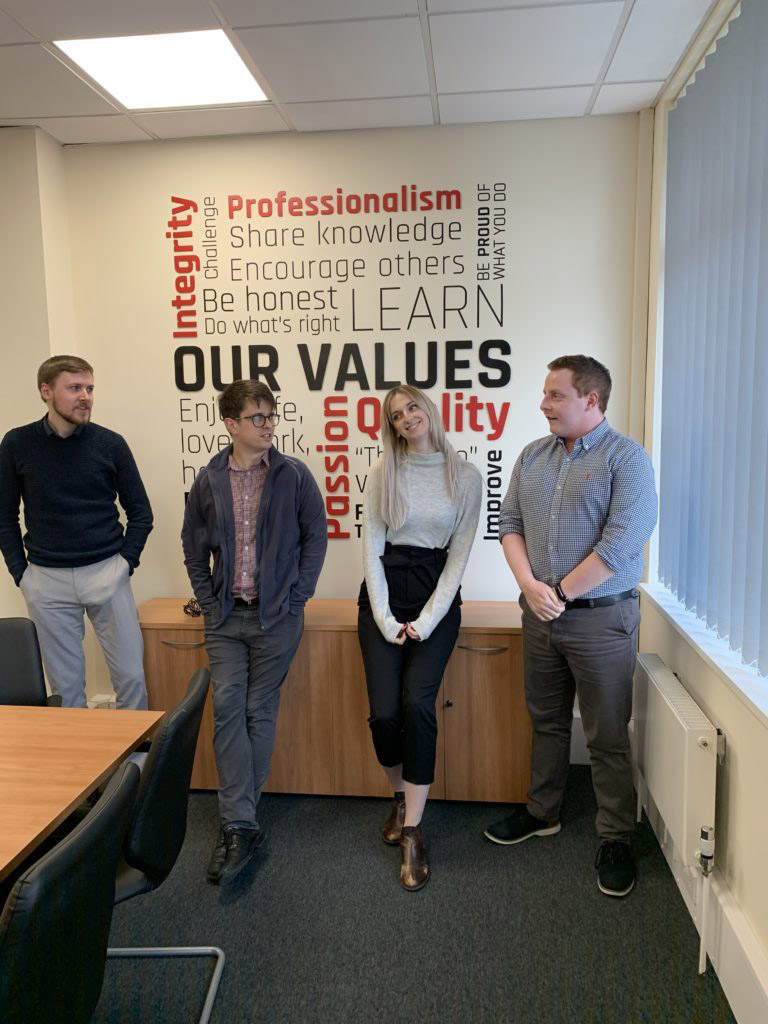Dangerous UXO misconceptions by Researcher Patrick Weller
Patrick is one of Igne’s team of inhouse researchers who help clients understand their construction site’s history, enabling them to make informed decisions about their unexploded ordnance risk mitigation strategy.
Discover dangerous UXO misconceptions with Igne Researcher Patrick Weller
Patrick Weller has been with Igne for 2 and a half years.
He’s one of Igne’s team of in-house researchers who help clients understand their construction site’s history, enabling them to make informed decisions about their unexploded ordnance risk mitigation strategy.
What did you do before working at Igne?
I was a barista at Cafe Nero while I finished my degree in History. It makes me a perfect researcher because I’ve got the historical knowledge AND excellent coffee making skills!
What’s your favourite part of the research role at Igne?
I really enjoy creating the mapping and delivering the imagery and visual side of things for clients. That involves finding primary sources from archives - it’s quite fun. But I think my favourite part of the job is finding the anecdotal records.
Uncovering stories from people who lived through past events - such as WWI and WWII - shows what life was really like for them.
Some of the stories, in particular those about the impact of explosive ordnance, are really sombre and gruesome. It’s not that I enjoy the macabre side of it but rather I enjoy trying to understand what life truly felt like during a particular time in history.
What discoveries have stood out to you through your work?
A distinctive element I’ve come across is the complete lack of health and safety that existed in the war. It’s horrendous. Children would be allowed to go out and play with leftover bombs. Obviously, this resulted in a lot of casualties...
I remember reading about one incident that occurred on a large training area. A group of children went out to play and a child picked up a mortar bomb and unscrewed the cap, he died in the blast and one of his friends lost a leg.
Another boy ended up setting his parent’s shed on fire, he was trying to dismantle an incendiary bomb. Children are naturally curious, and they didn’t understand the threat, so this was sadly a brutal reality of the time.
At Igne your main focus is WWII, but what’s your favourite period in history and why?
I studied medieval history at university and my studies focused on the period between the 10th and 13th centuries.
My dissertation was actually in medieval knighthoods. So, I'm really interested in the early medieval / modern period; particularly the culture.
It’s hard to get into the mindset of people from so far back in history because you can only really understand the lives of the educated, wealthy people as theirs are the lives documented.
It’s nearly impossible to determine what day to day life was like for the average person. The majority of things we know about these people comes from the discoveries of archaeologists.
With recent history, you can see the evolution of how we got from the past to the present. With medieval history you need to completely reconstruct your understanding of the world because the way people saw things was so incredibly different.
This meant I spent a lot of time reviewing artefacts and resources to understand this culture. This is cross transferable to how I use sources to understand threat levels for clients today.
How has weaponry evolved since medieval times?
It’s getting further and further away from close range combat. Initially the only long-range weapons were a bow, or they were siege weapons, like a catapult or trebuchet. We know that combat occurred in open fields with spears and swords on horseback, which seems so far away from how things are today.
Now basically everything is long range. It’s all guns, missiles, aeroplanes, vehicles - everything has developed to enable people to attack from a distance. This distance enables dehumanisation.
If you then apply cyber warfare to that you’re distancing and dehumanising it even further.
But historically, the fighting wasn’t as ‘chivalrous’ as people were led to believe. It was basically peasants and a lot of spears.
What’s the most interesting project you’ve worked on at Igne?
The airfields are always really interesting to research because there will be a real depth to their history.
We also did work for a site in London; Selfridges were looking to expand their stores and this was a really great project to work on. There had been a lot of secret communications between Brits and Americans in this location in addition to the entire area getting flattened by bombs.
Also, one of the Welsh sites I worked on had a great story where a Luftwaffe pilot got lost flying back from Bristol. He landed on a Welsh airfield, thinking it was France. Obviously, the British RAF couldn’t believe their luck and raced out to meet him. A man stationed at the airfield had no weapons, so he grabbed a flare gun and pulled it on the pilot who was trying to escape, capturing him and the plane.
What are common UXO misconceptions that we can hopefully help dispel to keep clients safe?
The biggest misconception is that there’s no ongoing threat from UXO. The general disbelief people have is a problem we need to overcome.
A typical response to the fact a client site may need an unexploded ordnance risk mitigation strategy is: “What? How is there still more ordnance out there to be found?” People are really shocked at how many explosive items are still being found so many decades after the war - and that even after all this time they still pose a risk.
We also get asked how we’ll know when we have accounted for all explosive threats. The truth is, we never really will know. Regrettably, there was no giant list of how many bombs were dropped and where.
Another issue is that people believe that if redevelopment has occurred on a site since WWII there will obviously be no more risk as something has already been built over a bombed-out site. However, ordnance is often found much deeper, below the surface of newer buildings.
This can happen due to the evolution of construction methods – we’re digging deeper to build higher - or sometimes items of UXO turn up between piles for example.
At a school in Bath they were developing a playground, work had been done on it since WWII but they needed to dig up the tarmac, when they found a bomb pointing nose up underneath it.
Can you imagine? Children had been playing on top of this threat for decades.
What makes working for Igne different to other research jobs?
I think the applicability of it; how our historical research has a genuine and beneficial impact on infrastructure and construction developments.
Thank you, Patrick for sharing your time and insights!
Curious about common UXO misconceptions? Or do you need to know the history of your site? Contact Igne today for a desktop assessment that will be created by one of Igne’s expert researchers.
Other articles of interest

Cone penetration testing with Connor’s Rig
One of the reasons behind the UK land team’s decision to invest in Connor's Rig from Geomil earlier this year was to advance Igne's (formerly SafeLane) cone penetration testing (CPT) capability...

Igne launch
Igne launch sees transformative merger of six leading companies to reshape pre-construction services in the infrastructure, energy and water sectors.


